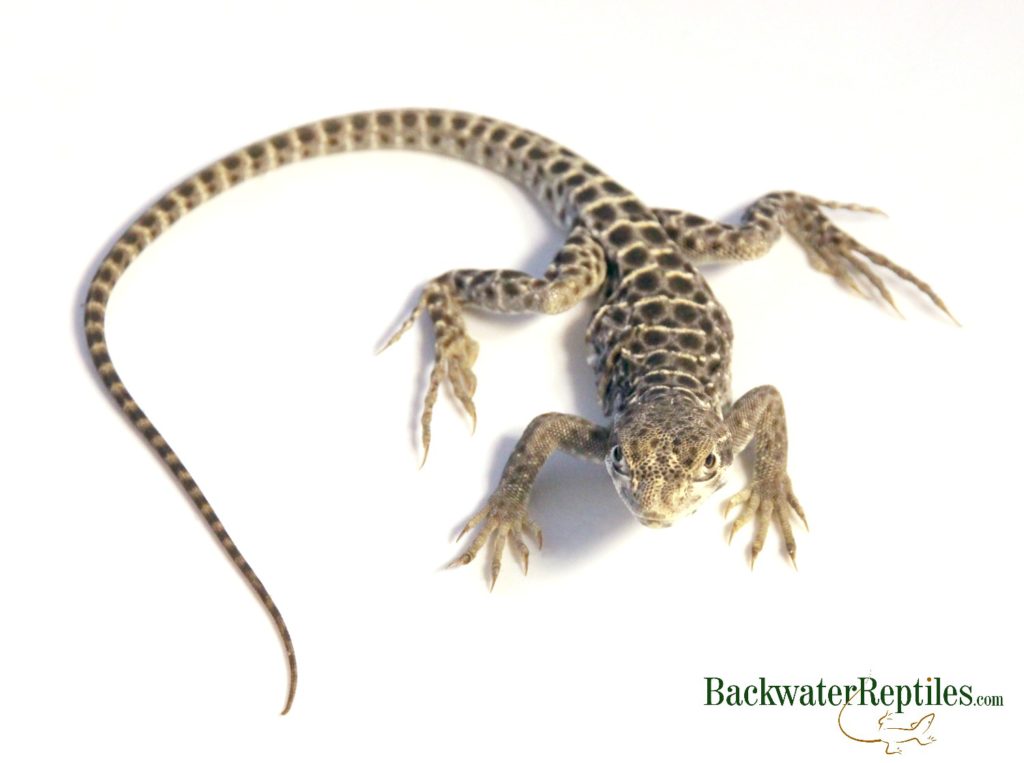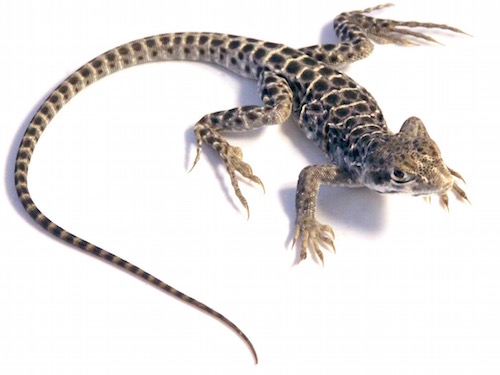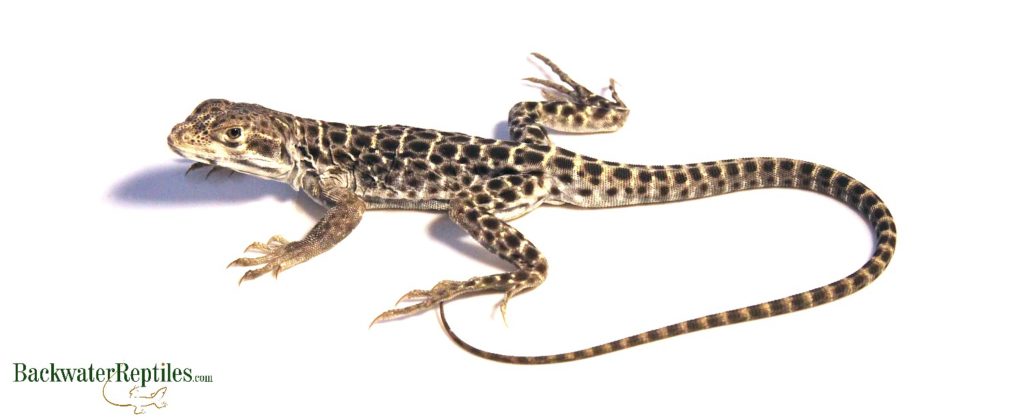Although they might have similar names, leopard lizards are very different from their popular cousin, the leopard gecko. Leopard geckos are very well-known and have very good reputations within the reptile hobbyist world, but we think leopard lizards deserve love too.
In this blog article, we will describe how we care for our leopard lizards and why we think they make good pets.
Leopard Lizard Care
Leopard Lizard Description
Although their coloration varies by location, leopard lizards get their name from the detailed spotted pattern on their backs and tails which resembles that of a leopard. Their dorsal side will be a shade or brown, grey, or tan and the spots will be a dark brown and can also be paired with bar patterns as well. A leopard lizard’s belly will be cream-colored or light beige/tan.
Leopard lizards are somewhat flat animals with long, powerful limbs and long fingers and toes to match. Even their tails are long. In fact, it’s usually true that the tail of a leopard lizard is longer than the length of its head and body combined.

Not taking into consideration the length of the tail, leopard lizards are moderately-sized. Males will be around five inches long from snout to vent. Females will be slightly larger and usually be around seven inches long snout to vent when fully grown
Leopard Lizard Habitat
Leopard lizards are desert-dwelling creatures native to North America and some areas of Mexico. They prefer landscapes that are flat, sandy, and filled with shrubby plant cover. This means that to keep a leopard lizard happy in captivity, you will need to replicate a desert environment.
Even though leopard lizards are not considered large lizards, they are active foragers, rather than ambush predators, which means that they will require a relatively large enclosure. A single, full grown lizard should have a cage that is a minimum of three feet long, two feet wide, and 28 inches tall.
Because they are energetic, diurnal lizards capable of jumping quite high, we do recommend that your enclosure have a secure screen lid. They are strong and if they have the will to escape and your cage top is not firmly in place, your leopard lizard will get out.
Fun fact: male leopard lizards are not territorial or cannibalistic, so provided all the lizards are of a comparable size, you can actually keep several animals together in the same enclosure. Males shouldn’t fight over females provided there is ample room for them all to exist comfortably.
As far as lighting is concerned, because leopard lizards are diurnal, they need to be provided with a day/night cycle. You should have a full-spectrum UV light on during the day and turn it off at night.

A heat lamp will also be required in order to maintain desert basking temperatures. Ambient temperature should be at least 85 degrees Fahrenheit. The hotter basking area should be around 100 degrees.
Because your leopard lizard’s cage will be on the warm side, be sure to provide some hiding and crawl spaces. In the wild, leopard lizards will hide out when the weather is too extreme and they also use these hiding areas for security purposes to stay away from predators.
Leopard Lizard Feeding
Leopard lizards are powerful and adept hunters. A fair portion of their diet in the wild consists of smaller vertebrates including small lizards. This is why we mentioned that all lizards kept together in captivity must be of comparable size.
Although they mainly subsist on small vertebrates in the wild, in captivity, leopard lizards should be fed mostly insects. Too many feeder lizards, feeder mice, or other types of vertebrate food items will cause health issues. Be sure that you provide a variety of gut-loaded insects such as crickets, meal worms, wax worms, and reptiworms. When it comes to captive diets, variety is key to keeping your leopard lizard healthy.
Leopard Lizard Temperament
Because they have powerful jaws for such a small lizard, we recommend keeping the handling of your leopard lizard to a minimum. Leopard lizards are not overtly aggressive, but they are certainly not afraid to bite if they feel threatened.

Without proper handling on a consistent basis from a young age, leopard lizards are skittish, shy animals. Therefore, we recommend that unless you are willing to work with the animal from the time it is a hatchling, that you leave it to its own devices for the most part.
Conclusion
Leopard lizards don’t have particularly stringent or difficult care requirements, but they are avid carnivores with active temperaments. We recommend them for herp enthusiasts with the room to house them and the time to devote to working with them.
If you are ready to take on a pet leopard lizard of your own. Backwater Reptiles can definitely help you out!
